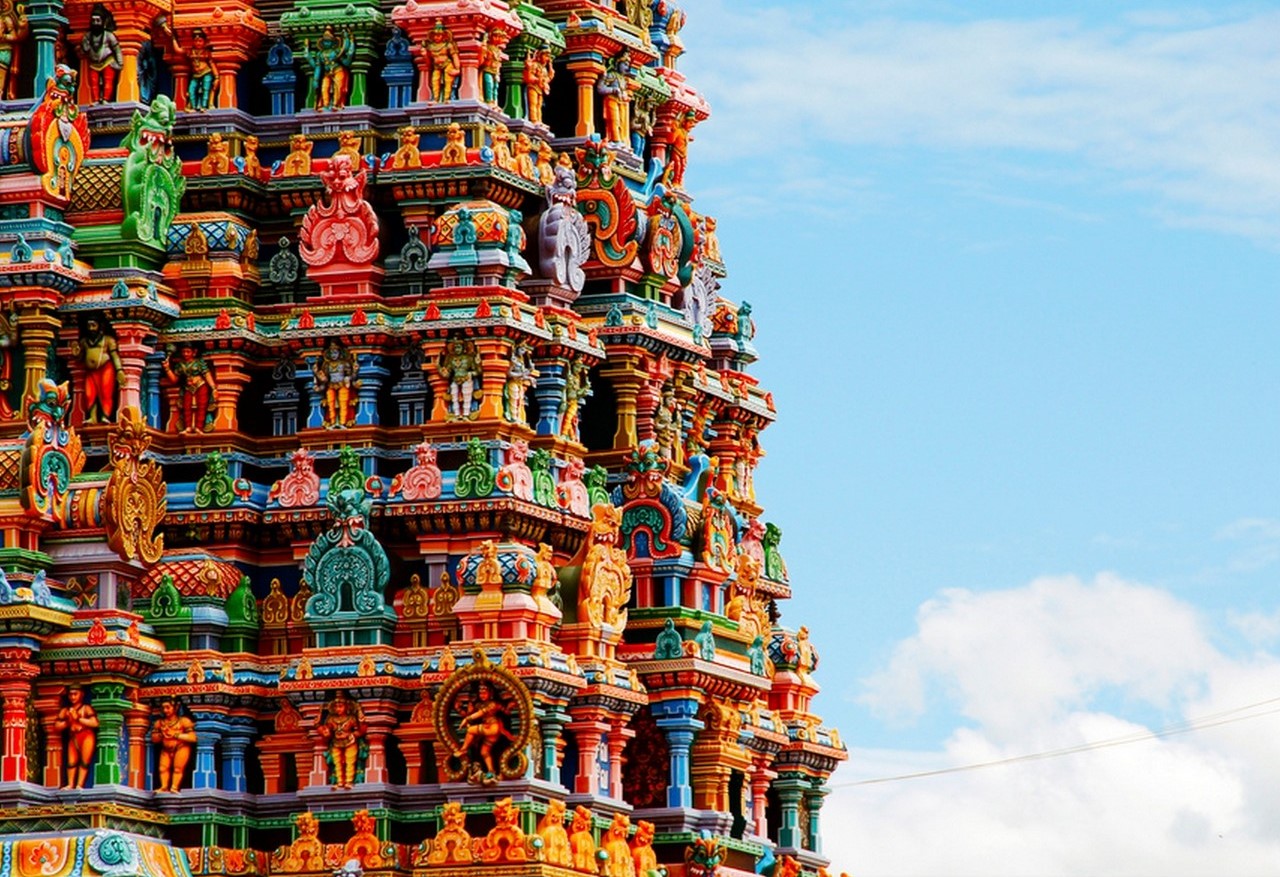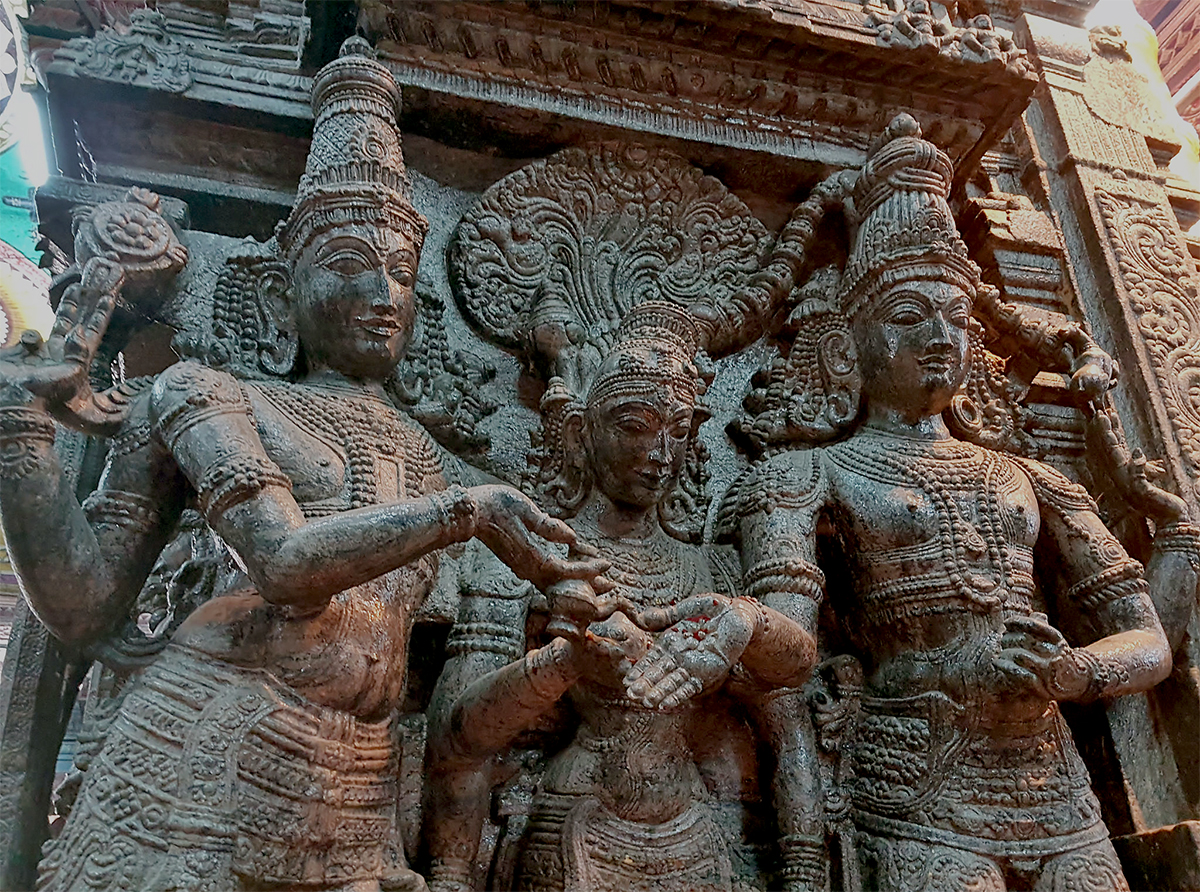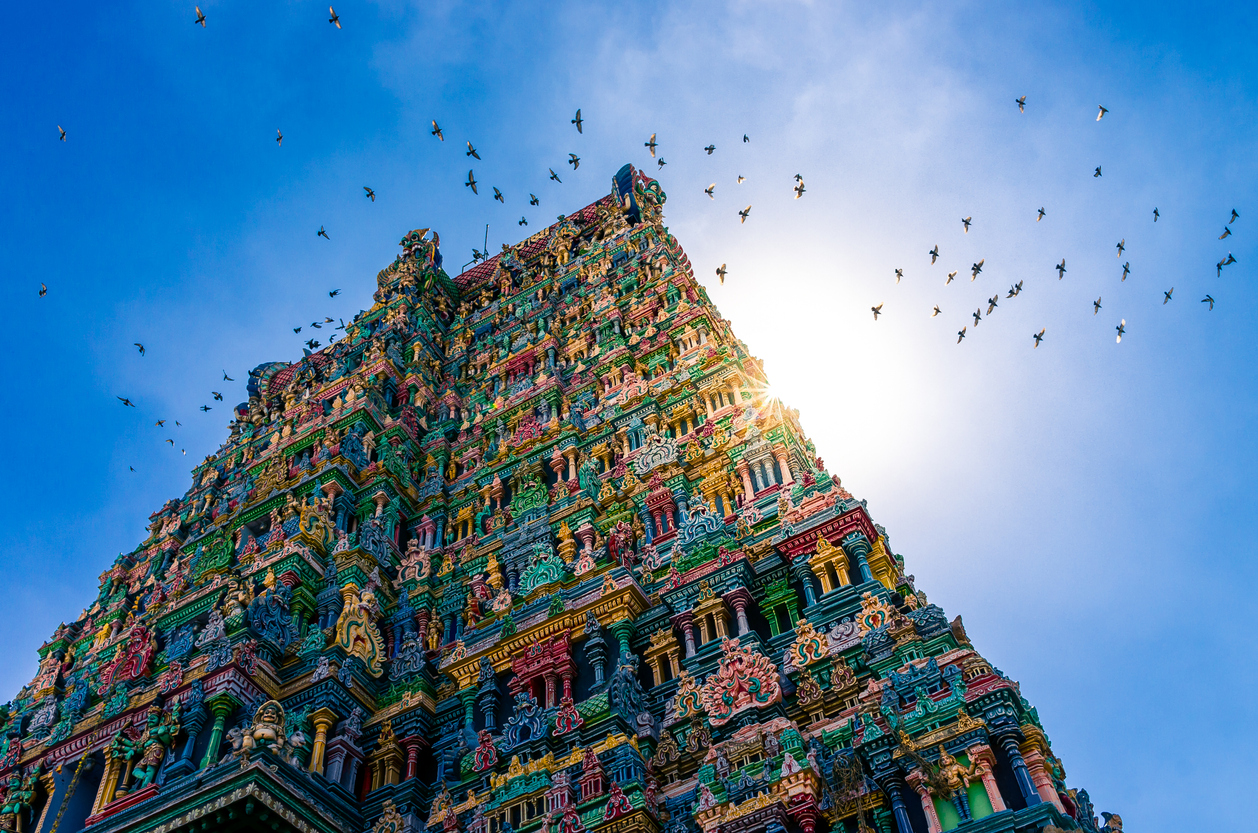Arulmigu Meenakshi Sundaraswarar Temple is a historic Hindu temple located on the southern bank of the Vaigai River in the temple city of Madurai, Tamil Nadu, India. Also known as the 'Taj Mahal of the South'.
It’s also one of India's most visited temples, and is a must-visit spot in South India. The best time to visit the temple is early morning. Morning 5 to 6:30 is the first puja timing and the Temple opens at 4:30 am.
The winter season is the best season because it is the time when this city experiences pleasant weather, which makes outdoor activities comfortable. Men and women with exposed shoulders and legs are not allowed to enter the Madurai Meenakshi Temple premises.
The Legend of Arulmigu Meenakshi Sundaraswarar Temple
The main sanctums of Goddess Meenakshi and Lord Sundaraswarar are open to only Hindus. It is dedicated to the goddess Meenakshi, a form of Shakti, and her consort, Sundaraswarar, a form of Shiva. The goddess Meenakshi is the principal deity of the temple, unlike most Shiva temples in South India .
According to the Tamil text Tiruvilaiyatarpuranam, king Malayadwaja Pandya and his wife Kanchanamalai performed a Yajna seeking a son for succession. Instead, a daughter was born out of the fire who was already 3 years old and had three breasts.
| Thrilling Travel |
Shiva intervened and said that the parents should treat her like a son, and when she meets her husband, she will lose the third breast. They followed the advice. The girl grew up being the successor and proved herself gifted in battle, conquering armies in all directions.
The legend tells us that she also captured Indralok .When she sought to attack the north, however, she was confronted by the god Shiva, who dwells on Mount Kailash, deep in the Himalayas. Upon seeing him, one of her breasts fell off and the prophecy was realized.
The Meenakshi temple was almost completely destroyed in the year 1310 following the invasion of the Islamic conqueror Malikkapur. But the temple complex we experience today is largely the work of the Nayak dynasty in the 16th and 17th centuries.
Architecture of the Temple
They enlarged the complex and redesigned the surrounding streets in accordance with the sacred tradition of the Vastu Shastra. The word gopura may be derived from the Tamil words ko meaning “king,” and puram meaning “exterior or gateway”; or from the Sanskrit go meaning “cow” and puram meaning “town.”
 |
| Iris Holidays |
The gopuras act as symbolic markers for the sacred space into which they lead and most are covered with a profusion of brightly painted stucco figures representing gods and demons.
The temple has 12 lofty gopurams, out of which 4 major ones are placed facing the four directions. There are 4 inner gopurams that act as the entrances to the shrine. These gopurams are heavily carved, and are reconstructed and cleaned every 12 years.
What Is the Hall of Thousand Pillars?
The Hall of Thousand Pillars, or Aayiram Kaal Mandapam is a wonderful piece of architecture and is believed to be built out of a single rock. There are many ancient paintings inside the museum of this temple.
This is the only part of the temple that is open to visitors and devotees of all beliefs. This is the largest hall in the temple, and has huge statues of Natarajan and Sivakami in the centre of the hall.
The idol of the goddess is carved in emerald hued stone. The eyes of the idol are large, beautiful and mysterious, true to the name Meenakshi which means "Fish eyed".
Two principal sanctuaries (accessible only by Hindus) sit at the centre of the temple complex: one dedicated to Meenakshi (who is considered a manifestation of the goddess Parvati), and another dedicated to Sundaraswarar or “Beautiful Lord” (a form of the god Shiva).
A gold finial, visible only from a high vantage point, caps each of these sanctuaries. Fronting each sanctuary is a mandapa (a pillared, porch-like structure) that pilgrims pass through as they make their way to the garbhagriha (the innermost sacred areas of the sanctuary).
Each Friday evening, sculpted figures of Meenakshi and Sundaraswarar are placed upon a swing in the temple and gently rocked in imitation of a romantic interlude, and each spring they are celebrated in a massive multi-day festival.
At the south end of the complex is the Golden Lily Tank, which is used by believers for ritual bathing before they enter the sanctuaries of Meenakshi and Sundaraswarar. The northeast corner of the complex is occupied by the Thousand Pillar Hall, a vast, ornate mandapa.
Although there are actually only 985 pillars, the effect is impressive, with most of the stone pillars carved in high or low relief depicting gods, demons, and divine animals.
Originally this space was likely used for religious dancing and musical performances as well as a place to gain an audience with the king. Today the Thousand Pillar Hall functions primarily as a museum, with exhibitions of bronze sculptures, paintings, and objects from the temple’s history.
The Sculptural Splendors of the Temple
The temple has around 33000 sculptures in it. However, it’s especially famed for its vast sculpture of the , which has been built on a silver altar.
It is also a home to a wedding hall, innumerable small shrines, gardens, and elephant sheds.
 |
| Smart History |
The temple is so beautifully maintained that it was recognized as the ‘Best Swachh Iconic Place’ in India in 2017 by the Central Government.
The floor of the entire temple is covered by neatly cut rectangular rocks. These rocks are mostly plain, devoid of any carvings. If you tap on these rocks, it does not sound hollow. But, for every certain number of rocks, there are square rocks with a lotus carved on them.
If you tap on these "lotus rocks", they sound hollow! This supports the theory that there are hidden, underground structures in the Madurai Meenakshi Temple. These "lotus rocks" could be secret gateways into underground passages or cellars. It is well documented that most Indian Kings had secret escape routes and hidden treasures underground.
Written by- Radhika Agrawal
Edited by- Aastha setia











0 Comments